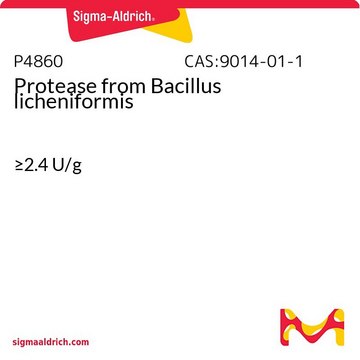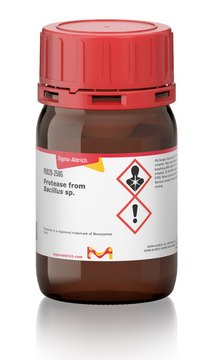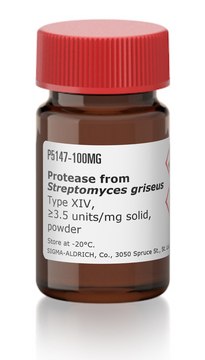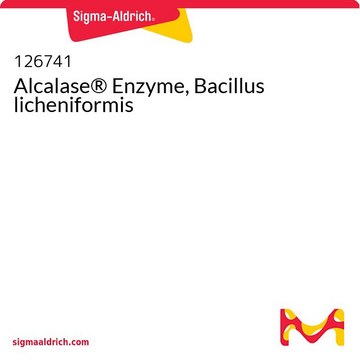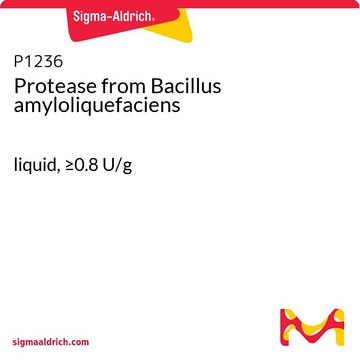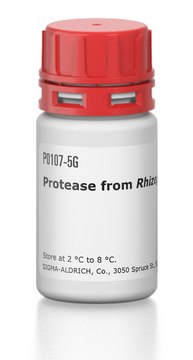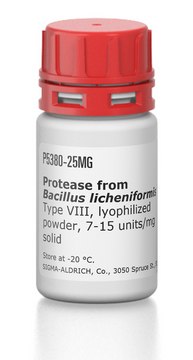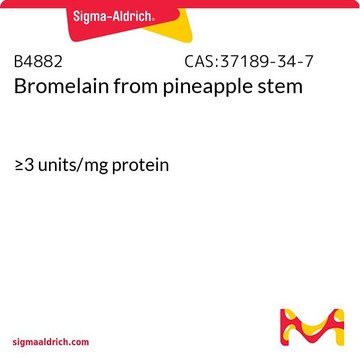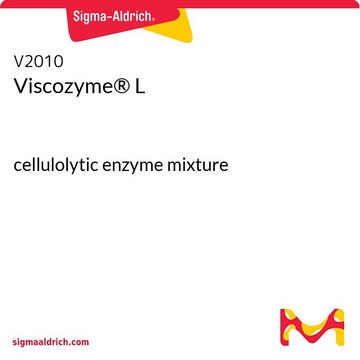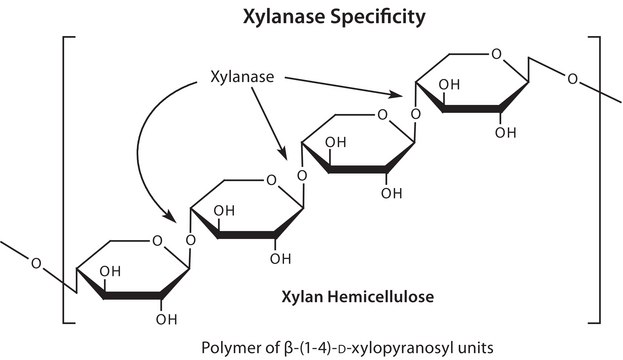P6110
Protease from Aspergillus oryzae
≥500 U/g
Synonym(s):
Flavourzyme®
Select a Size
Select a Size
About This Item
Recommended Products
General description
Application
- to study the effect of protease inhibitors from Moringa oleifera
- to evaluate its hydrolyzing effect on the anatomical structure and chemical composition of archaeological wood samples
- to perform protease digestion to process mucosa samples obtained from the colon of pigs
Biochem/physiol Actions
Unit Definition
Legal Information
Signal Word
Danger
Hazard Statements
Precautionary Statements
Hazard Classifications
Acute Tox. 4 Oral - Aquatic Acute 1 - Aquatic Chronic 2 - Eye Dam. 1 - Resp. Sens. 1 - Skin Irrit. 2 - STOT SE 3
Target Organs
Respiratory system
Storage Class Code
10 - Combustible liquids
WGK
WGK 2
Personal Protective Equipment
Regulatory Information
Choose from one of the most recent versions:
Certificates of Analysis (COA)
Don't see the Right Version?
If you require a particular version, you can look up a specific certificate by the Lot or Batch number.
Already Own This Product?
Find documentation for the products that you have recently purchased in the Document Library.
Which document(s) contains shelf-life or expiration date information for a given product?
If available for a given product, the recommended re-test date or the expiration date can be found on the Certificate of Analysis.
How do I get lot-specific information or a Certificate of Analysis?
The lot specific COA document can be found by entering the lot number above under the "Documents" section.
How do I find price and availability?
There are several ways to find pricing and availability for our products. Once you log onto our website, you will find the price and availability displayed on the product detail page. You can contact any of our Customer Sales and Service offices to receive a quote. USA customers: 1-800-325-3010 or view local office numbers.
What is the Department of Transportation shipping information for this product?
Transportation information can be found in Section 14 of the product's (M)SDS.To access the shipping information for this material, use the link on the product detail page for the product.
What is the composition of the solution for product P6110, Protease from Aspergillus oryzae?
The composition of product P6110, Protease from Aspergillus oryzae, is 42.8% (w/w) water, 30% (w/w) sucrose, 10% (w/w) potassium chloride, 0.20% (w/w) potassium sorbate, and 17% (w/w) enzyme.
My question is not addressed here, how can I contact Technical Service for assistance?
Ask a Scientist here.
Our team of scientists has experience in all areas of research including Life Science, Material Science, Chemical Synthesis, Chromatography, Analytical and many others.
Contact Technical Service